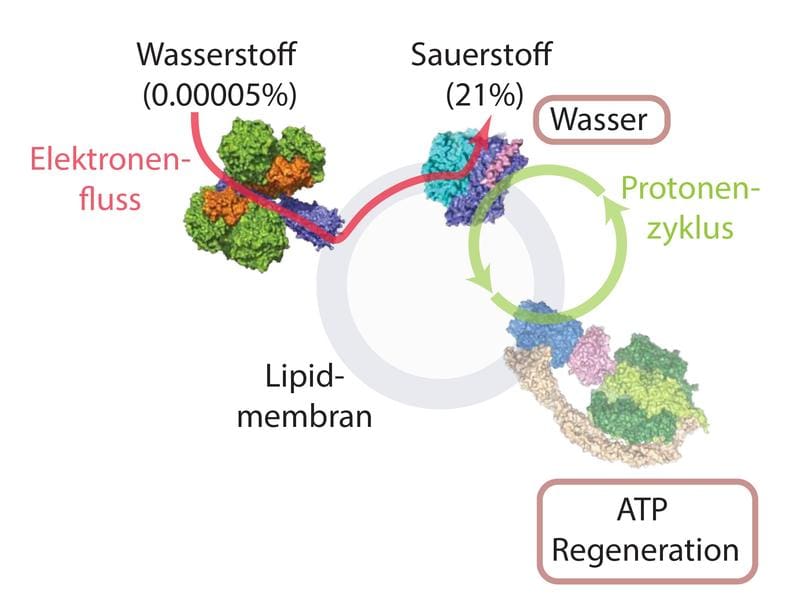Laboratory sensation: Organisms can generate energy from air
Researchers at the University of Bern, in collaboration with scientists from Australia and New Zealand, have recreated an important biological process in the laboratory that enables certain organisms to obtain energy directly from hydrogen in the air. The results, published in the journal Proceedings of the National Academy of Sciences (PNAS), confirm that microorganisms such as bacteria can use hydrogen as an energy source without relying on sunlight or other energy sources.
Hydrogen, a trace gas in the atmosphere with a concentration of only 0.00005 %, is kept constant by photochemical and human processes despite an annual production of around 70 million tons. This is due to microorganisms in the soil that absorb hydrogen with the help of specialized enzymes known as hydrogenases and convert it into energy. The researchers recreated a synthetic respiratory chain consisting of three enzymes in an artificial lipid membrane that reproduces this process in the laboratory. In this process, hydrogen is converted with oxygen to water, which stores energy in the form of ATP (adenosine triphosphate), the central energy source of cells.

The experiments show that, despite the extremely low concentration of hydrogen in the air, organisms can generate enough energy to survive in adverse environments such as the Antarctic, where organic energy sources are lacking. The process also explains why the hydrogen concentration in the atmosphere remains stable.
The reaction of hydrogen with oxygen produces only water as a waste product and is considered an environmentally friendly method of energy production. The results open up prospects for sustainable ATP production, for example in synthetic biology or drug production. The researchers emphasize that the speed of energy production could be increased at higher hydrogen concentrations, which opens up new applications. The work marks a milestone in research into biological energy processes and their technical use.
Original Paper:
ATP synthesis driven by atmospheric hydrogen concentrations | PNAS
Editorial office: X-Press Journalistenbû¥ro GbR
Gender note. The personal designations used in this text always refer equally to female, male and diverse persons. Double/triple references and gendered designations are avoided for the sake of better readability ected.




